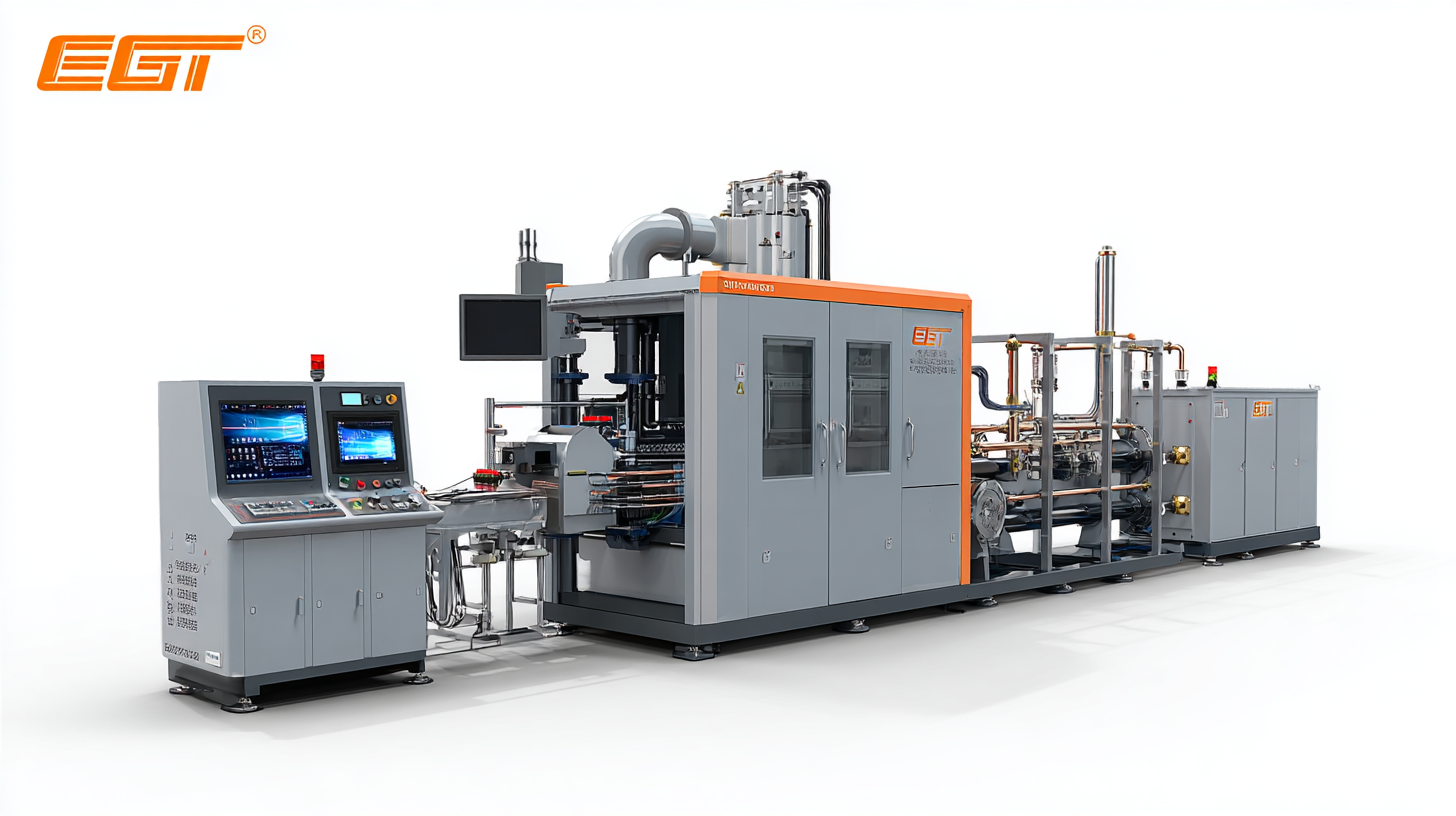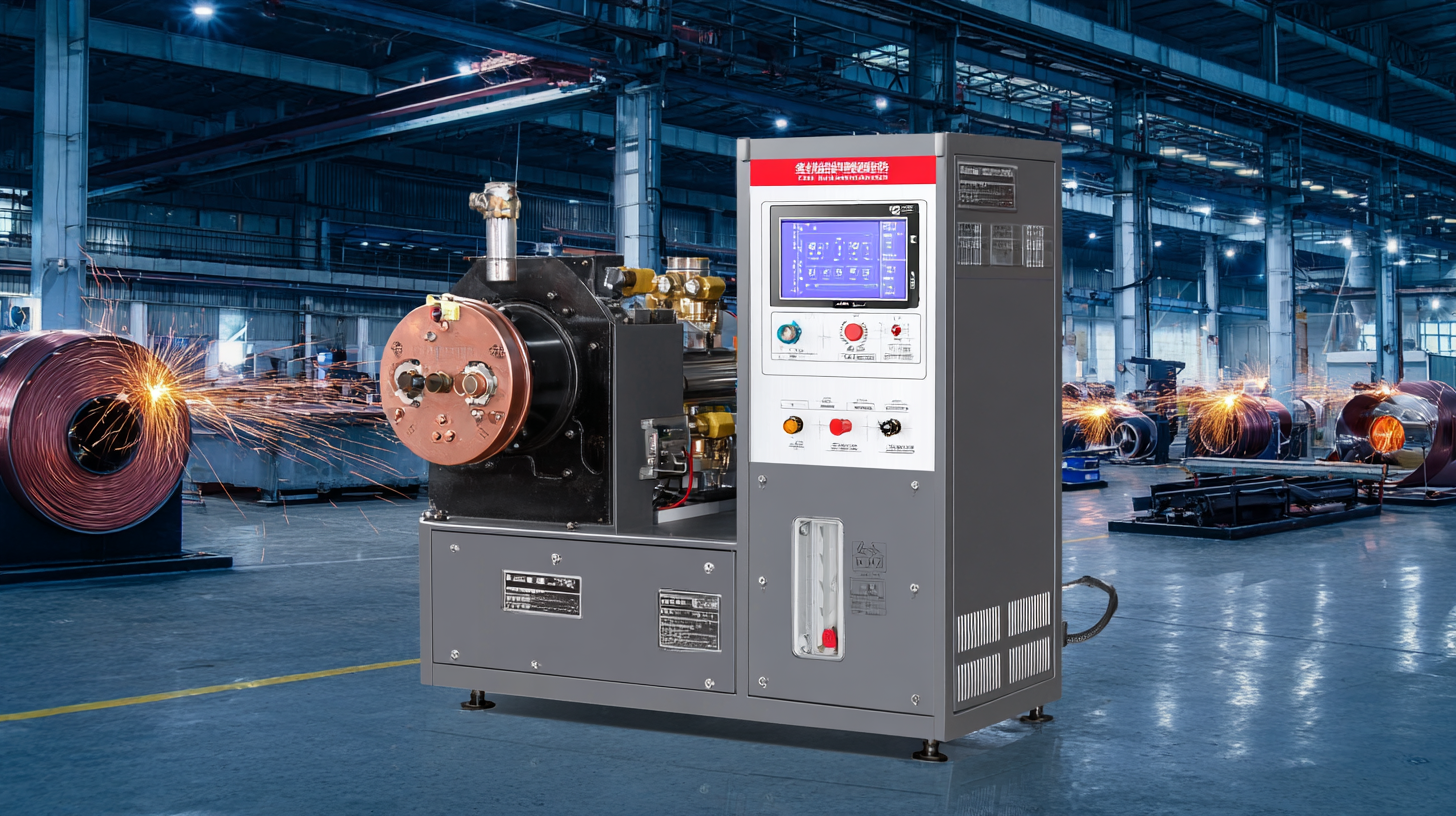
The demand for high-quality welded pipes has surged globally due to the rapid growth in industries such as oil and gas, construction, and automotive. As a result, manufacturers are increasingly turning to advanced technologies for pipe welding. Among these, the High Frequency Pipe Welding Machine stands out for its efficiency and effectiveness in producing strong, precise welds. According to a recent report by MarketsandMarkets, the global pipe welding market is projected to reach USD 5.5 billion by 2025, growing at a CAGR of 4.2%. This underscores the importance of investing in cutting-edge welding machines to enhance productivity and meet industry standards. With the right High Frequency Pipe Welding Machine, manufacturers can significantly reduce production costs and improve the overall quality of their products, making it a crucial element in the pursuit of operational excellence within the manufacturing sector.

The landscape of manufacturing is poised for significant transformation as we approach 2025, especially with the rise of high-frequency welding technology. This technique offers manufacturers enhanced efficiency by improving weld quality and minimizing production times. According to a report from Research and Markets, the global market for high-frequency welding machines is projected to grow at a compound annual growth rate (CAGR) of 6.5% through 2025, indicating a robust adoption of this technology among manufacturers. The ability to reduce energy consumption and speed up production cycles makes high-frequency welding particularly appealing in an era focused on both sustainability and efficiency.

Moreover, high-frequency welding's impact extends beyond immediate production benefits. The American Welding Society reports that companies leveraging modern welding technologies can see up to a 30% reduction in operational costs. Enhanced precision and lower maintenance needs of high-frequency machines further contribute to manufacturing efficiency. Industries such as automotive and HVAC have already begun to witness noticeable gains, with manufacturers reporting improved product consistency and faster go-to-market times, aligning with the growing demand for quicker turnaround and higher-quality outputs in competitive marketplaces. As manufacturers increasingly prioritize efficiency, embracing high-frequency welding technology will be crucial in shaping the future of smart manufacturing by 2025.
High-frequency pipe welding machines have gained significant traction in global markets, driven by their efficiency and precision. Key performance metrics such as welding speed, energy consumption, and output quality are critical for manufacturers evaluating the best options available. Factors like cycle time and heat input can dramatically affect productivity and the integrity of welds, making these metrics essential for enhancing operational efficiencies.

When choosing a high-frequency pipe welding machine, consider the following tips: First, assess the machine's compatibility with the materials you plan to work with. Different machines excel with various materials and thicknesses. Second, look for machines that offer advanced cooling systems, as they can prolong the life of the equipment and improve welding consistency over time. Finally, prioritize machines with easy-to-use controls and automation features, which can streamline processes and reduce labor costs.
As the market for high-frequency TIG welders continues to grow, manufacturers must remain vigilant about the latest trends and technological advancements. Balancing cost with performance capabilities will be key to selecting a machine that not only meets current needs but also adapts to future demands in the ever-evolving manufacturing landscape.
In the competitive world of manufacturing, energy consumption is a critical factor influencing both operational costs and environmental sustainability. A comparative analysis of high-frequency pipe welding solutions reveals that leading machines, such as the Miller Electric’s High-Frequency TIG Welder, exhibit a remarkable efficiency range of 70-90%. This efficiency translates to lower energy consumption while achieving superior welding quality. According to a recent report by ResearchAndMarkets, investing in advanced welding technology can reduce energy debts by up to 30%, providing both economic and ecological benefits for global manufacturers.
When selecting a high-frequency welding machine, manufacturers should consider not only the initial investment but also the long-term energy savings. Tips for optimizing energy efficiency include regular maintenance of equipment to prevent power loss due to wear and tear, as outlined in a study by the American Welding Society. Moreover, utilizing pulse welding techniques can significantly reduce energy consumption while maintaining the integrity of welds, leading to increased production rates without sacrificing quality.
For manufacturers looking to enhance their operational efficiency, it is crucial to stay updated on the latest technological advancements and energy-saving practices in high-frequency welding. Emphasizing careful machine selection and maintenance can lead to improved bottom lines and reinforce a commitment to sustainable manufacturing practices.
As the global manufacturing landscape continues to evolve, the demand for efficient pipe welding machinery is on the rise. Innovations in technology are driving the development of high-frequency pipe welding machines, making them more efficient and effective than ever before. Key trends we can expect by 2025 include enhanced automation, improved energy efficiency, and advanced materials that increase durability and performance. Manufacturers who stay ahead of the curve will benefit immensely from these advancements.
Tip: When investing in new pipe welding machinery, consider features that enhance automation. Machines equipped with smart technology can significantly reduce manual labor, improving consistency and productivity.
Moreover, the integration of IoT (Internet of Things) in pipe welding machines is set to revolutionize the industry. By enabling real-time monitoring and diagnostics, manufacturers can optimize operations and reduce downtime. This will not only streamline production but also minimize waste, aligning with sustainability goals.
Tip: Regular maintenance and software updates for your welding machines are critical. Staying updated can prevent unexpected failures and maintain the efficiency of your operations.
High frequency welding has emerged as a game-changing technology for global manufacturers in various industries, particularly in the production of pipes. Case studies reveal how leading manufacturers have successfully integrated high frequency welding machines into their production lines. For instance, a prominent steel pipe manufacturer in Europe adopted these machines to enhance their welding speed and precision. By transitioning from traditional welding methods, they improved operational efficiency by over 30%, leading to a significant decrease in production costs and wastage.
Another noteworthy example comes from a North American company specializing in plastic pipes. The implementation of high frequency welding allowed them to achieve seamless joints with durable structural integrity. This not only boosted product quality but also enhanced their competitive edge in the market. These case studies underscore that the effectiveness of high frequency welding machines lies not just in their technical specifications, but in the ability of manufacturers to adapt and optimize their workflows, resulting in higher output and better resource management.
